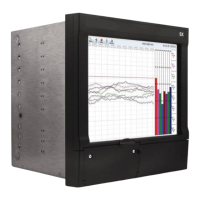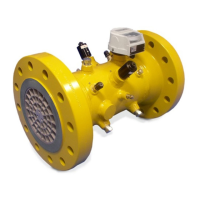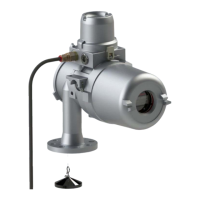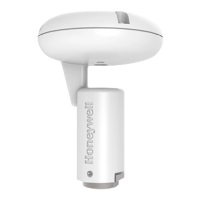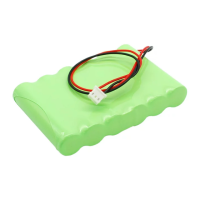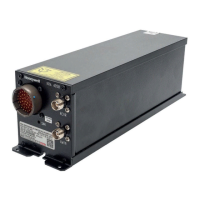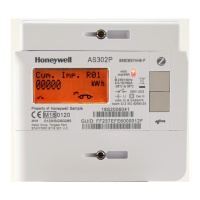44 Honeywell Sensing and Control
Signal Conditioning, Self Calibrating Digital Indicators
Rev. G, 008-0608-00
If the CALIBRATION TYPE is 5-Point Known Displacement Cali-
bration...
• ThedisplaywillreadDOING 5POINT CAL, and prompt you to
APPLY 00000 UNIT (where 00000 and UNIT are previously
entered as KNOWN POINT 1/5 and DISPLAY. UNITS). When you
have applied this displacement to the transducer, press
[ENTER].
• ThedisplaywillreadWORKING, then APPLY 00250 UNIT (where
00250 and UNIT are previously entered as KNOWN POINT 2/5
and DISPLAY. UNITS). When you have applied this displace-
ment to the transducer, press [ENTER].
• Thedisplaywillread WORKING, then APPLY 00500 UNIT (where
00500 and UNIT are previously entered as KNOWN POINT 3/5
and DISPLAY. UNITS). When you have applied this displace-
ment to the transducer, press [ENTER].
• ThedisplaywillreadWORKING, then APPLY 00750 UNIT (where
00750 and UNIT are previously entered as KNOWN POINT 4/5
and DISPLAY. UNITS). When you have applied this displace-
ment to the transducer, press [ENTER].
• ThedisplaywillreadWORKING, then APPLY 01000 UNIT (where
01000 and UNIT are previously entered as KNOWN POINT 5/5
and DISPLAY. UNITS). When you have applied this displace-
ment to the transducer, press [ENTER].
• Uponcompletion,thedisplaywillindicateDONEandthe
instrument will return to the RUN mode.
11.5.7 DAC SETUP Sub-Menu
This sub-menu contains four items that control the Digital-to-Ana-
log (DAC) output of the channel.
DAC. CHANNEL Menu Item
This chooses which channel will drive the DAC output. Normally,
the DAC located on a particular channel will be driven by that
channel, but that need not be the case. For example, if several
channels were assigned to various transducers in a system, the
sum of all channels could (mathematically) drive one channel’s
DAC output.
If the DAC is set-up to be driven by its own channel’s tracking
value, the Analog Output will have the frequency response speci-
fied by the channel’s FREQ. RESPONSE menu item. Otherwise, the
Analog Output will operate more slowly.
DAC. SOURCE Menu Item
This designates the data source of the channel monitored by the
analog output. Each channel has three data sources: the live
tracking value (TRACK), its highest value (PEAK), and its lowest
value (VALLEY).
The options for this menu item are:
• “TRACK” means the live tracking value of the channel.
• “PEAK” means the highest value of the channel since the
peak/valley detector was last cleared.
• “VALLEY” means the lowest value of the channel since the
peak/valley detector was last cleared.
If the DAC is set-up to be driven by its own channel’s tracking
value, the Analog Output will have the frequency response speci-
fied by the channel’s FREQ. RESPONSE menu item. Otherwise, the
Analog Output will operate more slowly.
DAC. ZERO-SCALE Menu Item
This specifies what value, in engineering units, corresponds to
zero output on the Analog Output.
“Zero output” might be 0 Volts, 2.5 Volts, 5 Volts, 4 mA or 12 mA
depending on if the channel has a voltage or current output and
how it is configured. See “Analog Output Configuration” on page
46 for details.
DAC. FULL-SCALE Menu Item
This specifies what value, in engineering units, corresponds to
full output on the Analog Output.
“Full output” might be 5 Volts, 10 Volts or 20 mA depending on if
the channel has a voltage or current output and how it is config-
ured. See “Analog Output Configuration” on page 46 for details.
11.5.8 DIAGNOSTICS Sub-Menu
DAC FULL SCALE Menu Item
When this menu item is selected, the Analog Output of the chan-
nel is forced to its full-scale output, then DAC UPDATED is displayed.
This is useful when calibrating or trimming the readout connected
to the Analog Output.
DAC ZERO SCALE Menu Item
When this menu item is selected, the Analog Output of the
channel is forced to its zero-scale output, then DAC UPDATED is
displayed. This is useful when calibrating or trimming the readout
connected to the Analog Output.
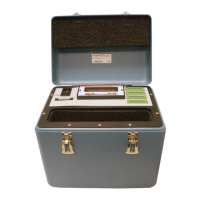
